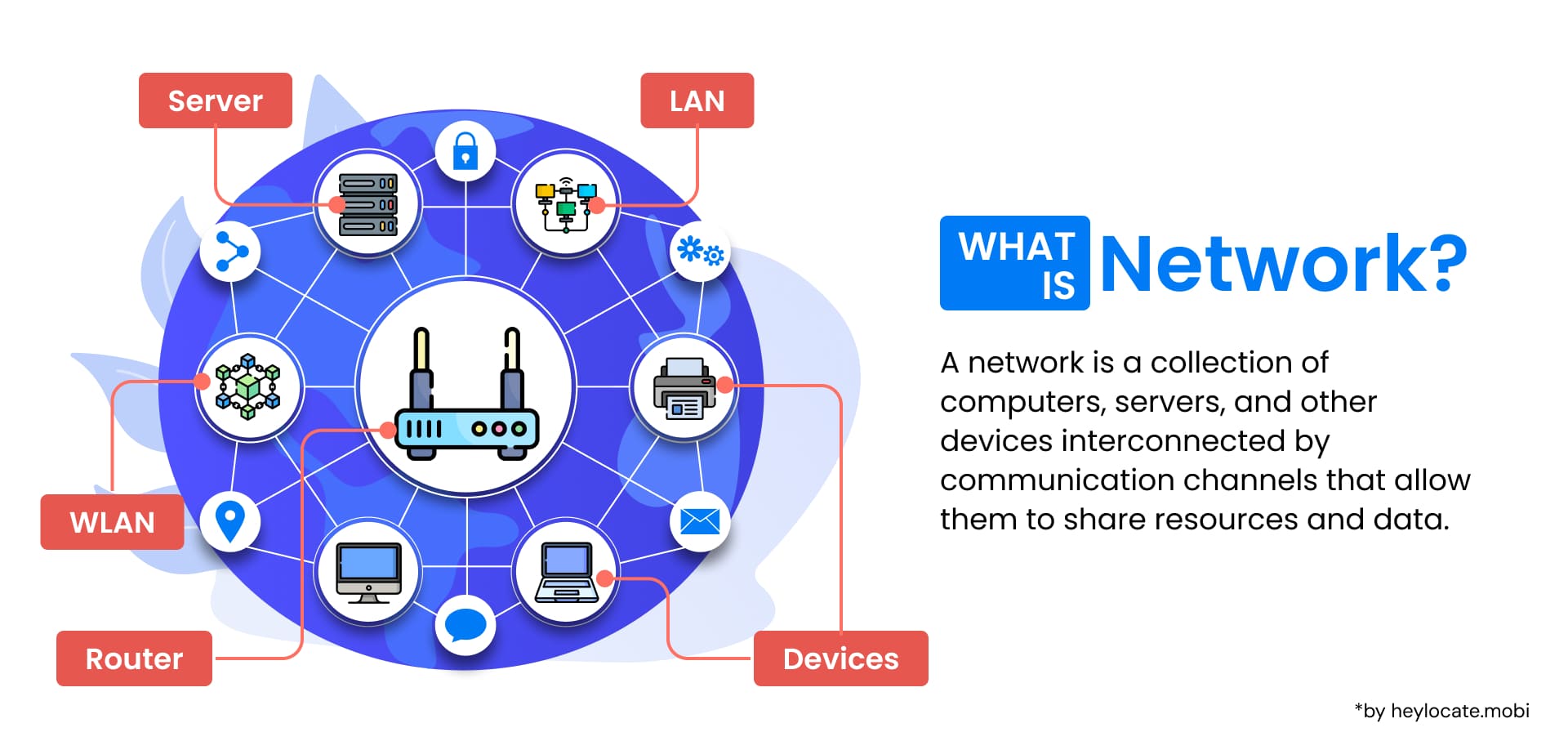Network
What is Network?
A network, within the realm of computing, is an intricate system that bridges computers and various devices, allowing them to interact and collaborate in the sharing of resources and information. It represents a comprehensive assemblage of interconnected entities, encompassing computers, servers, routers, and switches, which are meticulously linked to foster the seamless exchange of data and resources.

Classification of Computer Networks
Computer networks can be classified based on various criteria, including geographical scope, transmission medium, and bandwidth requirements.
| Classification | Description | Examples |
|---|---|---|
| Geographical Scope | Networks categorized based on the geographical area they cover | Local Area Network (LAN), Wide Area Network (WAN), Metropolitan Area Network (MAN), Personal Area Network (PAN) |
| Transmission Medium | Networks categorized based on the medium used to transmit data | Wired (Ethernet, Fiber Optic), Wireless (Wi-Fi, Bluetooth, Cellular) |
| Bandwidth Requirements | Networks categorized based on their bandwidth capabilities | Narrowband, Broadband |
Network Addresses and Hostnames
Each device in a network must have a unique network address to establish communication.
- Network Address: A numerical identifier assigned to each device in a network. The example includes an IP Address (e.g., 192.168.0.1).
- Hostname: A user-friendly name mapped to an IP address using the Domain Name System (DNS). The example includes www.example.com.
Applications and Services Supported by Computer Networks
Computer networks support a wide range of applications and services, including access to the World Wide Web, digital video and audio services, video conferencing, and resource sharing.
| Application/Service | Description |
|---|---|
| World Wide Web Access | Enables users to access websites, search for information, and communicate through email and instant messaging applications |
| Digital Video and Audio Services | Enables the delivery of high-quality video and audio content to users (e.g., Netflix, Spotify) |
| Video Conferencing | Facilitates real-time, face-to-face communication between users in different locations |
| Resource Sharing | Simultaneously supports multiple users’ access to shared resources, such as files, databases, and applications |
Use and Functionality of Computer Networks
Computer networks serve various purposes, including interpersonal communication, resource sharing, and enabling collaboration.
- Interpersonal Communication: Electronic communication between individuals, regardless of geographical location (e.g., email, instant messaging, social media).
- Resource Sharing: Facilitates user access to shared resources, like files, databases, and applications, irrespective of their location.
Overlay Networks
Overlay networks are virtual networks built on top of existing networks, using additional software and protocols to provide additional functionality.
- Virtual Private Network (VPN): Enhances security and privacy by encrypting and tunneling network traffic. Allows users to access resources on a remote network securely.
- Content Delivery Network (CDN): Improves performance and reliability of content delivery by distributing content across multiple servers. Ensures faster and more reliable access to content for users in different geographical locations.
References
- Computer network | Wikipedia
- What is a Network? | College of Education, University of South Florida
- What is networking? | IBM
- Glossary – Network | sdxcentral
- What is a network? Definition, explanation, and examples | 10/05/2020 | IONOS
- Was ist ein Computernetzwerk? | Amazon Web Services – AWS
- What is Computer Networking? 06 Feb, 2024 | GeeksforGeeks
- Network | 12/10/2023 by Computer Hope